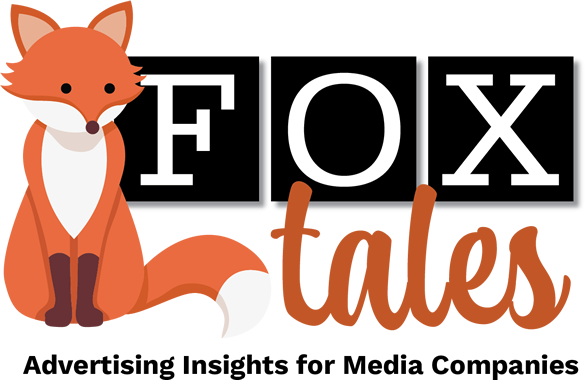For many magazine-media brands, particularly in the niche publishing and association sectors, print media is strong. It remains central to the brand identity. For those companies, their publication printer remains their biggest and most important supplier and partner.
But we also know that the media landscape has changed dramatically and continues to experience disruption. Indeed, the pandemic brought more than its share of challenges for the industry, most recently the supply-chain backlogs of late 2022 and early this year.
With so many of our Fox Associates customers and potential partners experiencing all these things simultaneously, we thought it would be timely and valuable to check in with a printer. We selected Sheridan, the well-established solutions provider that specializes in print and digital magazines plus books, catalogs and scholarly journals. It’s based in Hanover, Pennsylvania, and 10 other locations.
We had the good fortune to check in with three top executives: Martin Sullivan, director of procurement, CJK Group; Brian Grimes, manager logistics/mail, Sheridan; and Jim Wilde, VP of publication group sales. Together they painted a picture of dynamism and responsiveness. What follows is a transcript of our conversation.
Fox Tales: Thanks for giving us a few minutes, folks. Let’s start with this. Give us your take on the state of the “Three P’s” circa mid-2023: Paper, publication printing, and postal. Are frequencies and folios holding strong?

Martin Sullivan.
Martin Sullivan: Paper demand has plummeted throughout 2023. Despite this, prices have remained fairly stable so far and mills have opted to take downtime rather than build inventory or drop pricing. There have been a couple of reductions in supply—Evergreen in the uncoated offset market and ND Paper’s long-announced conversion of the Biron [Wisconsin] mill from coated groundwood to packaging, but these have had little-to-no effect on availability to this point. All grades are currently in plentiful supply and lead times have dropped in some cases to four to six weeks from about 16 weeks during most of 2022.
Brian Grimes: After the January USPS price increase, we have seen some small declines in mail volumes—mostly keeping frequencies, but cutting back slightly on quantities. Mailers are being more selective in their choices on who to send their catalogs and publications to. However, the industry does remain strong with many clients taking advantage of postal discounts such as calendar promotions, Drop Ship, and Co-Mail.
With regard to the state of current postal affairs: The USPS has just released another set of postage increases to take effect in July 2023. They are not exactly favorable to the publication industry as a whole. Their attempts to modify the heavier publication and catalog rates have resulted in a very poor picture for our type of work—especially flats over four ounces. The USPS moved the discount structure from the per-pound category to piece, meaning the discounts no longer increase as your piece gets heavier. As a result, while the USPS published its expected increases at over 6%, we are not only seeing that, but as much as double that on drop ship, co-mail (which incorporates drop ship), and especially for destination-delivery Every Door Direct Mail over four ounces, and increases as high as 15% or more.
We see this as having a negative effect on drop ship as a whole, meaning more mail will be entered directly to origin post offices, rather than mailers choosing to transport themselves. The result could put a huge strain on USPS resources, since they will have to increase self-transport. This is exactly the opposite of what they have been saying—especially knowing their goal is to replace their entire fleet with eco-friendly vehicles over the next few years.
Fox Tales: Where do you see each of these things going forward into next year and beyond?
Sullivan: In large part, the slump in demand has been caused by printers and paper brokers being overstocked with paper towards the end of 2022, and not ordering more while they work inventory down in 2023. Combine this with a softening of incoming print orders, as customers seem to be more cautious with an uncertain economy ahead. Paper manufacturers generally are still predicting that there will be more of a return to normal order levels in the second half of the year as inventories deplete at printers, but no one is expecting a return to the tight market that was experienced through most of 2022. There are some indicators that paper prices may fall slightly in the second half, but while input costs remain so high for the mills, they will be minimal and are not going to return to anything close to pre-2022 pricing levels.

Brian Grimes.
Grimes: In recent interviews, the comments from Postmaster Louis DeJoy suggest that the USPS is not too worried about continuing to increase postage rates. I suggest all mailers review his April comments in the Washington Post.
The USPS has also signaled that 2023 is not the end of twice-a-year increases—we expect 2024 to include two as well. We are hoping they move to a more incentive-based structure. Time will tell.
As for overall logistics, the supply chain appears to be stabilizing. Fuel surcharge percentages have come down to a more reasonable level (they’re expected to seasonally increase this summer), and the overall availability of trucking is getting more reasonable. As a company, we are back to receiving almost daily cold calls from carriers looking for business. Not to say that pricing is ever going to return to pre-pandemic levels—while they’ve stabilized, the higher-lane prices look to be here to stay.
Fox Tales: Going a bit farther upstream, what business attributes characterize the world of association publications right now? Are things solid and resilient?
Jim Wilde: Association members are still valuing the print publication as one of their most preferred member benefits. We would not characterize the association publishing market as solid and resilient but rather responsive and innovative. Member recruitment and retention have always been vital to an association’s success, but those challenges have intensified since 2020 for all of the reasons we have come to understand over the past three years. Successful associations have demonstrated adaptability in the face of digital transformation, economic fluctuations, and changing member needs. As more members work from home, their associations have shifted the focus a bit from print publications to incorporating more digital content, including webinars, online networking events, e-newsletters, slack/chat channels, social media, podcasts, and augmenting content delivery via their websites to keep their members connected and engaged in their communities. Associations are continually assessing how to deliver value to their members through their magazines or journals. This means not only offering content members cannot get commercially, but also ensuring that it is accessible, engaging, and represents all members. As member preferences evolve, associations adapt their content strategies accordingly by including more diverse voices.
Fox Tales: Traditionally, associations have strongly favored print because it is a tangible member benefit. Still true? If so, will it continue?

Jim Wilde.
Wilde: It is true that most associations (and their members) view their publications as a tangible benefit of membership. Reaching each member on a regular basis creates a sound foundation for retention and participation. However, the headwinds facing print publishers are strong. Paper, raw materials, printing costs, and postage have all seen dramatic increases over the past couple of years, and while the rate of inflation has eased, those headwinds will continue to blow.
Fox Tales: Given the current economic climate—and particularly in the publication world, what should association media groups do to reduce costs, to drive business momentum, and, of course, grow?
Wilde: Most association publications are cost centers rather than profit centers, and for those associations choosing to retain a print presence, we have seen a reckoning on creating (or recreating) a sustainable print program. Often this means changes to more economical papers, a reduced page budget, closely monitoring the number of printed copies, and reductions in frequency with the goal of maintaining a sustainable, tangible benefit to membership.
Sullivan: From a cost-saving stance, you can try to reduce trim size or drop to a lower basis weight or grade of paper. I would also recommend using your selected printer’s house brand of paper rather than specifying a particular brand name. This allows the printer to shop and manage their volume to get favorable pricing and eliminate waste.
There are also some good options available now in SCA++ grades. These are uncoated groundwood papers that are polished to a high sheen instead of having a coating applied. Most now reach up to 76 brightness levels. They can offer savings over a five-pound or even a four-pound coated stock without much, if any, sacrifice in quality. There are also still numerous printers with inventory to move. Ask your printer what cost-saving options they can offer you. They should be able to provide samples of any options that they have. Also keep page counts in increments that best fit the printer—usually increments of 16 or 32 pages work the best, but it can vary depending upon a particular printer’s press configuration. Discuss this with your printer, they will be able to guide you on the most efficient plan.
Grimes: Work with your printer. Find one with a strong logistics and mail background and take advantage of those resources. Consider using their freight discounts, especially for UPS/FedEx bulk shipments. Talk to them about ways to reduce postage. Maybe you can fold and tab your mailer to get letter rates. Perhaps explore applying for periodical. For those who are already periodical, do not automatically go to just reducing page counts to avoid the higher rates—consider increasing frequency in combination with those lighter publications. Of course, there is co-mail, drop ship, list cleaning, international mail consolidation, media mail, and a variety of other ways to help reduce postage and freight costs.
This industry has always been creative and will find ways to innovate and continue to grow.
Fox Tales: Tell us about your relationship with Fox Associates and how your partnership serves to benefit both of your companies and your common customers.
Wilde: Sheridan and Fox Associates have a mutual long-term commitment to the association publishing community; serving national publishers and being invested in their success.
